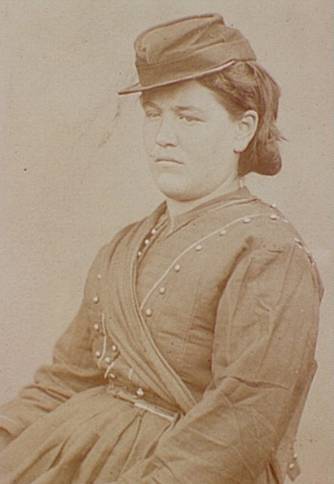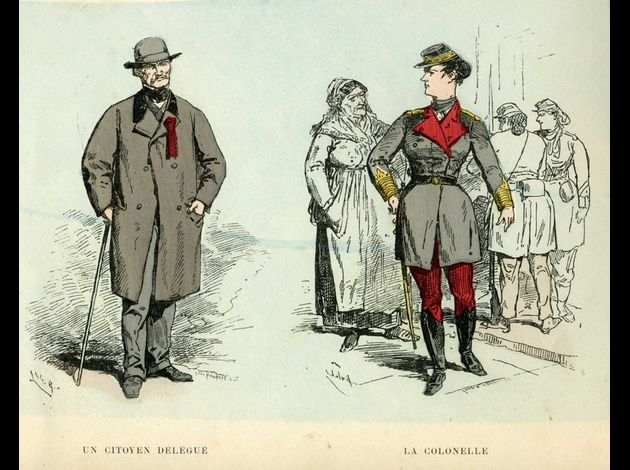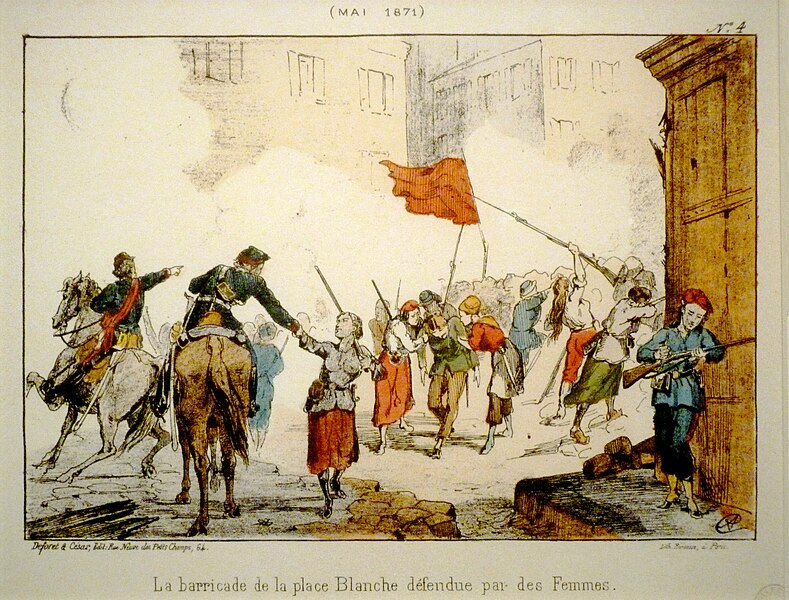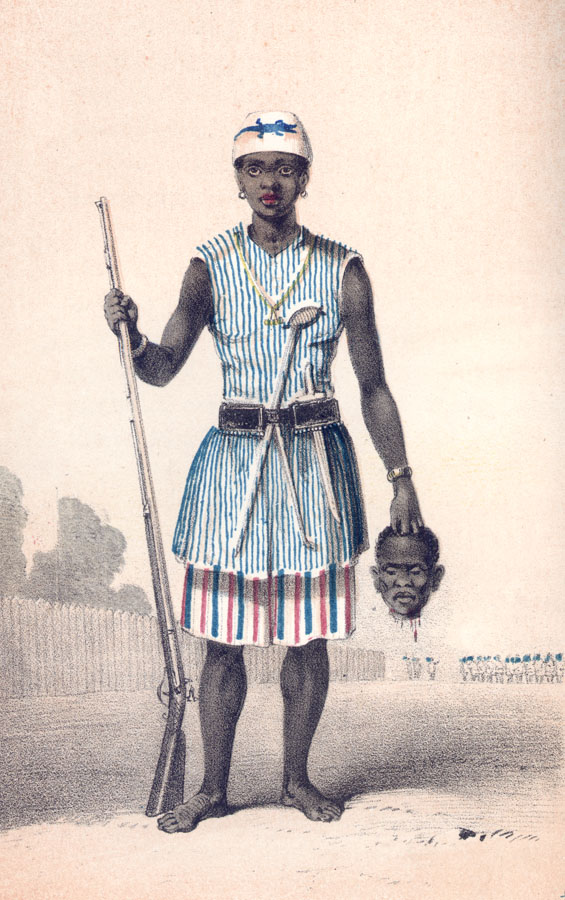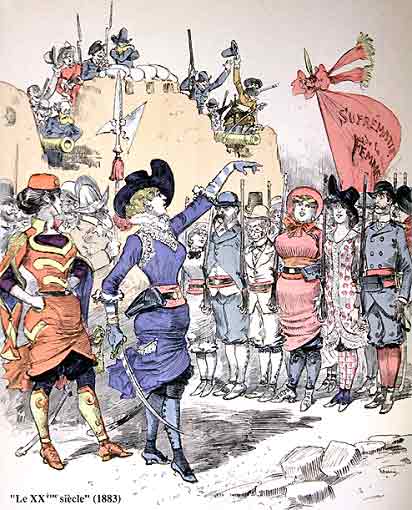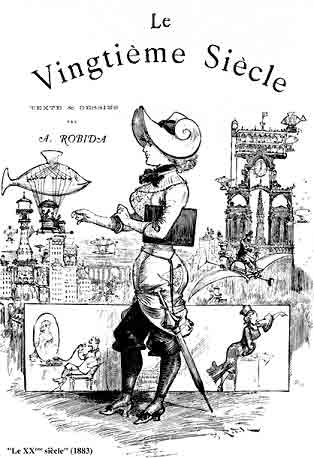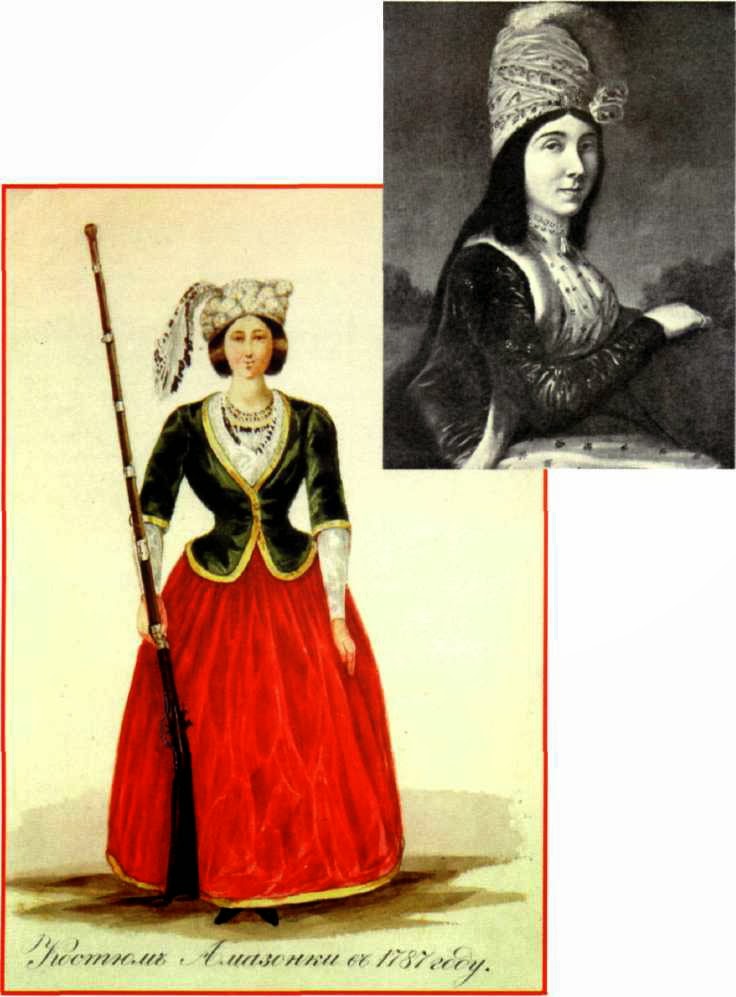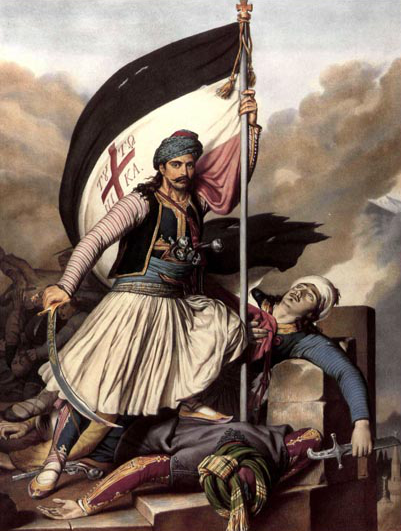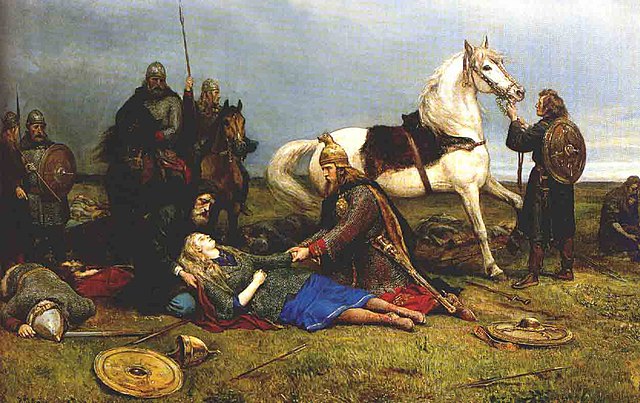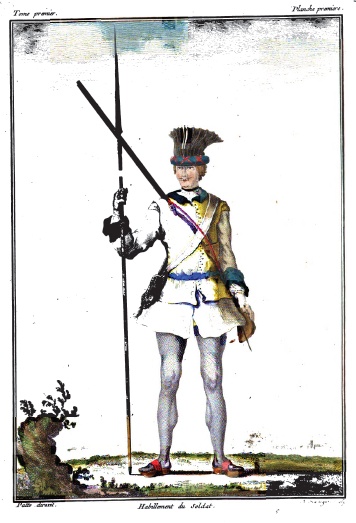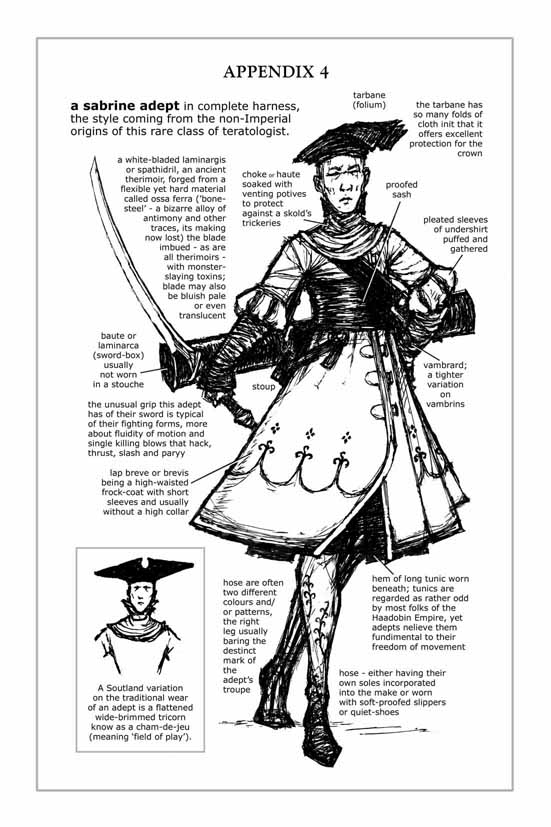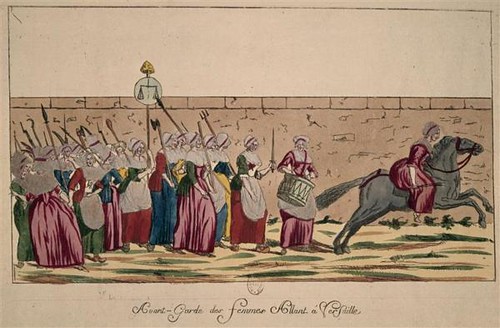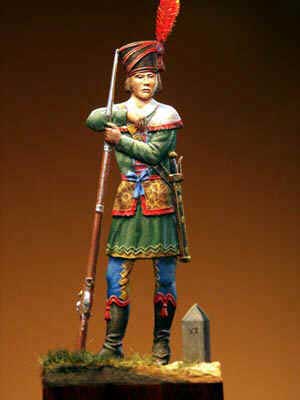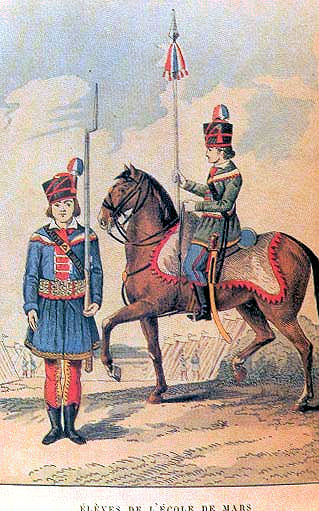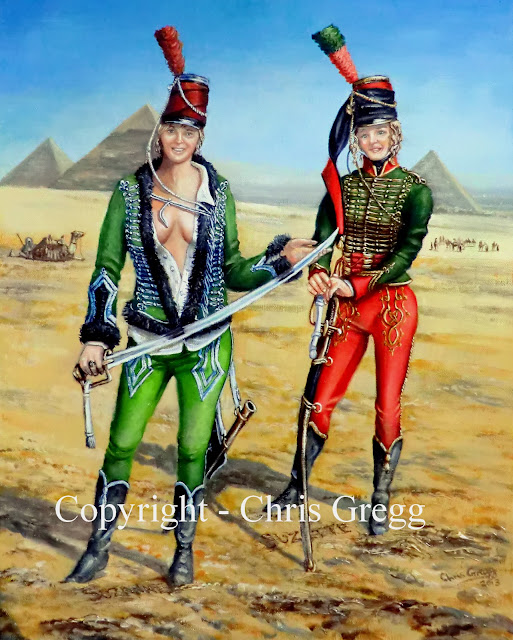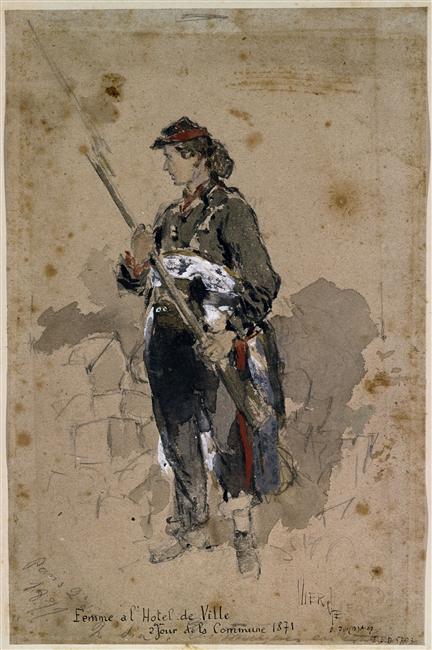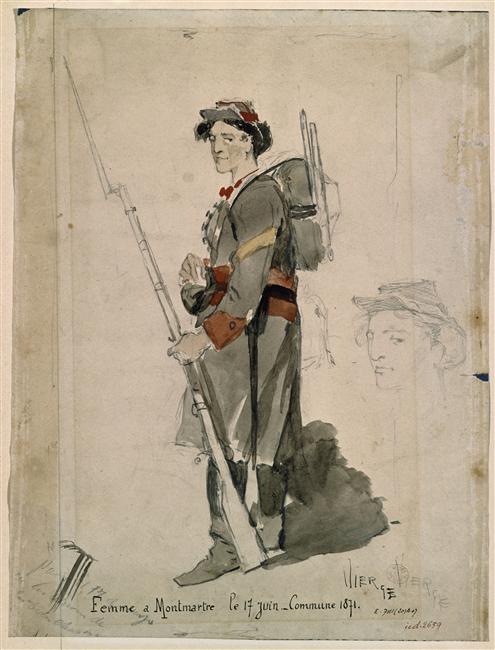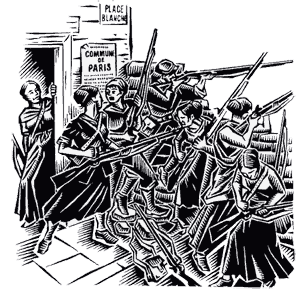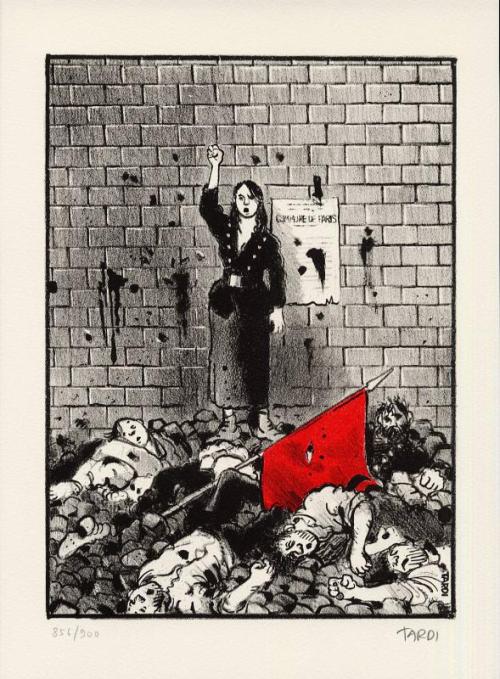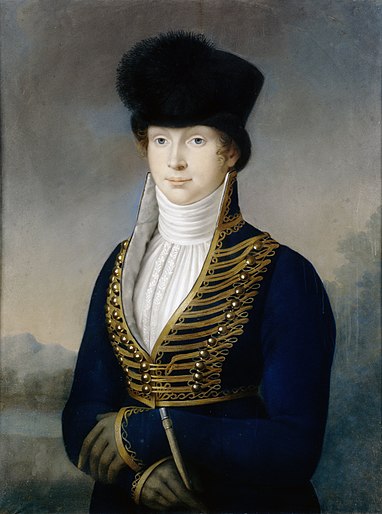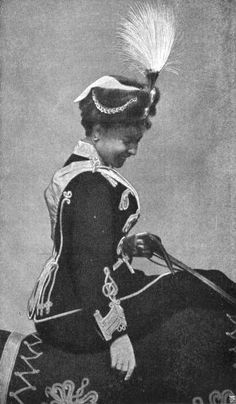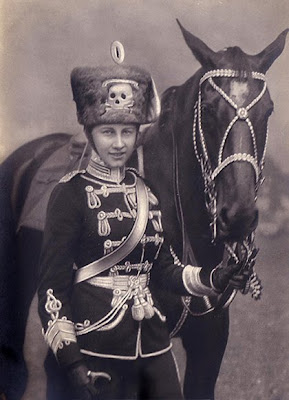Since thread necromancy is bad manners, I post here some musings elicited by Challenge: Female Soldiers in the 1700's
https://www.alternatehistory.com/discussion/showthread.php?p=6182448&mode=linear#post6182448
Background:
As stressed in the original thread, this is very, very unlikely (even if gender roles became more enforced by Victorian times). Historically we had:
- Individual women masquerading as men to enlist (in uniform, fighting, but their femininity hidden): the last example I known of in France is Fatima, a Moroccan woman who joined the Goumiers volunteer to be sent to France in 1914 as 'Régiment des Chasseurs Indigènes' -future Spahis Marocains http://femmesenuniforme.blogspot.fr/2012/09/image-fatima-seule-femme-combattante.html. A few were so admired that, once their gender known, they were not only kept in active service but promoted, such as in France Angélique Brûlon who retired in the Military Invalids as a captain and was eventually the first woman to receive the Légion d'Honneur http://en.wikipedia.org/wiki/Ang%C3%A9lique_Br%C3%BBlon, in Spain Agustina Raimunda María Saragossa Domènech (the only female officer in Wellington's army in Spain) http://en.wikipedia.org/wiki/Agostina and in Russia Nadezhda Durova 'The Cavalry Maiden' http://en.wikipedia.org/wiki/Durova who retired as captain (1).
- Individual women, acknowledged as such, in military uniform but not expected to fight: they mostly appeared in the 2nd half of the 19th C., as two very different types: as uniformed cantinières / vivandières (a French military fashion which spread together with the zouave uniform); but also high born ladies made regimental god-mothers / honorary colonels: e.g. Victoria Luise Prinzessin von Preussen for the Leib-Hussaren in 1909 http://www.preussen.de/Bilder/Geschichte/wilhelm_II./Victoria_Luise_1_-_Text_JK.jpg (I remember images of Queen Elisabeth in uniform, riding sidesaddle at the 'trooping the colours'). It was already not unknown in the (late) 18th C., we have paintings of Catherine II http://a51.idata.over-blog.com/497x...rtrait-equestre-de-Catherine-II-de-Russie.JPG riding in uniform of the Preobrazhensky Regiment http://www.oceansbridge.com/paintin...s-ZZZ-Equestrian_Portrait_of_Catherine_II.jpg (though wearing trousers and riding astride man-like is perhaps a little 'too much' for most women of the time).
- Women openly fighting (but most examples predate the generalization of uniforms), far more exceptional, in France Jeanne d'Arc but also Jeanne Hachette. This last is specially interesting, since not only she fought on the ramparts of Beauvais against the besieging Burgandians in 1472 but seemingly other women joined her to hold a segment of the curtain wall. So far we had only isolated individuals, here we have an all-female 'warband'. And to defend formal fortifications is a far less unlikely role for a 'regular' female unit than campaigning in the field. Several noblewomen became quite famous for leading the defense of their castles while their husbands were away (indeed there are still several well documented examples during the ECW and a case occurred in France as late as 1692 http://fr.wikipedia.org/wiki/Philis_de_La_Charce) and if most men had followed their lord they could have mobilized some of the women to drop boiling oil and stones on the attackers.
Lady Ann Cunningham http://en.wikipedia.org/wiki/Lady_Ann_Cummingham is also a striking example, so much the more as she reportedly raised a cavalry troop of men and women and led it in the Battle of Berwick.
- At last the rather mysterious Catherine II's 100-strong ceremonial company of Amazons raised in march 1787 by Potemkin (from wives & daughters of soldiers of the Balaklava Greek Settled Battalion) to escort the Empress during her visit with Joseph II to Crimea (because Herodotus had located the Amazons in the general area?): a whole regular unit at last; a ceremonial Queen's Guard is another not too unlikely possibility.
Thus I tried to combine these last two possibilities to have a permanent rather than ephemeral body: a troop of female defenders improvised during a siege and perpetuated as a Queen's Guard.
The difficulty is that in Western Europe during the 1700 -indeed between 1650 and the Revolutionary times- the civilian population of besieged cities was not interested in the defense, indeed not deeply in the outcome of the siege. War tried to be 'clean' and 'gentlemanly', unless the place was actually stormed troops were not 'unleashed', no murders, plunder & rapes; and for burgers in Flanders for instance to possibly pass from the rule of an Austrian Emperor to that of a French King was not too much of a concern. For the population, specially the women, to be motivated enough to fight one need a cruel civil war; the only example I can think of is the siege of Barcelona in 1714, given the atrocity of Philip V's repression in Catalonia -and it would require an independent Catalonia to perpetuate female defenders as a militia / city guard unit.
I developed my musings in France -being less ignorant of its military history, and France has a few favorable elements: the precedents of Joan of Arc and Joan Hatchet, Alienor of Aquitaine (remembered as French here) leading a troop of noble ladies masquerading as amazons during the crusade, and the great female knight Bradamante, developed in the Italian Orlandos and back-injected in the Matter of France (she was the heroin of a dramatic play first performed in 1582). Also, France had an interesting character with Julie d'Aubigny http://en.wikipedia.org/wiki/La_Maupin
For the possible uniform I concentrate on the mid-18th C., the 'heart'' of the Guerre en dentelle, my favorite period for military uniforms https://www.alternatehistory.com/discussion/showpost.php?p=8233587&postcount=6 (and wargaming). In France the most recent sieges implying a formed body of female defenders would date of the Wars of Religion (2).
So let's try: Les Carabinières de la Reine, 1585 - 1787.
Les Carabinières de la Reine: origins and history.
During the Wars of Religions French countryside was sometimes akin to the Anglo–Scottish border by the time of the Reivers, with raids and counter-raids by nobles of opposite confession. During her wanderings of 1585 Marguerite of Navarre is threatened by a party of marauders and takes refuge in the nearest castle: the landlord is away with most of his men, but the chatelaine closes the doors and arms the women. At most a few shots are fired, but learning that the lady who defended his wife is a beauty Henri decides to create a female company of Queen's Guards under her command. His relationships with Marguerite were absolutely awful, but Henri ('Until I was 40 I believed it had a bone') was not the man to miss an opportunity to gather a group of young, comely maiden at his court [as a consequence, Marguerite stays with him instead of being secluded 18 years in Usson; wonder how many of her Guards she tried to poison -she's rumored to have poisoned Gabrielle d'Estrée, who had born 4 children to the king while herself was barred http://www.youtube.com/watch?v=3tXiY2A8nAM (3)]. When Henri became king of France he added his Guard to the French Household (4).
During the Fronde the Carabinières provided the direct escort of the Queen and her sons during their escape from Paris and their wanderings, to the everlasting gratitude of Louis XIV. In 1690, despite the opposition of Madame de Maintenon Julie d'Aubigny received in commission in the Corps and became its acting swordmistress, but she was too independent for military life and resigned 3 years later, though after her return from Brussels she occasionally reappeared as an officious fencing mistress. In 1692 the Company received two recruits of note: Madeleine de Verchères http://en.wikipedia.org/wiki/Madeleine_de_Verchères was invited to join the Company, the expenses of the travel from New France to Paris covered by the Crown, and Philis de la Charce http://fr.wikipedia.org/wiki/Philis_de_La_Charce was given a commission of sous-lieutenante.
For reasons of his own Maurice de Saxe asked Louis XV to bring the Company when the king joined the army of Flanders: the Carabinières were at Fontenoy, but were forbidden to be part of the wild charge of the Household: they were the only guard Louis XV had kept for himself and the Dauphin - and they were riding sidesaddle.
Like the whole Maison Rouge the Company was reduced in 1776 and disbanded in 1787, but many ex-Carabinières, acting privately, gathered around the Queen when the revolutionary troubles began: many of them were killed defending the the Queen and the royal children when the Tuileries were stormed on aug. 10 1792. Their (ex)captain, Bien-Aimée de Labite de Monvoisin, was literally hacked to pieces while desperately trying to protect Marie-Antoinette and the princess with her body.
Louis XVIII did not resurrect the Carabinières, despite the pleas of the Duchesse d'Angoulême ; her own attempt during the 100 Days ("She's the only man in her family.") to raise an all-female royalist Compagnie de Jeanne d'Arc at Bordeaux was a failure.
Les Carabinières de la Reine: characteristic weapon and name.
It was stressed that women, being on the average shorter than men, where handicapped to reload the long-barreled muskets: but a man having to reload a mouth-loader while riding faces similar difficulties, and precisely a shoulder weapon with a shorter barrel war designed during the 16th C. for the cavalry, the carabine (rifled carbine), rifling balancing the shortening of the barrel with regard to range and accuracy. Thus the female guards received carabines, and in the same way as the Mousquetaires were named after their mousquets they were known as the Carabinières de la Reine. Of course they would carry a sword and a left-hand dagger (even when off-duty, being noble or assimilated (5) - the basic private probably ranking equal to a junior lieutenant of the Line) and often a pistol or two hidden under their skirt. In the early 18th C. the hilt of the main-gauche was modified to allow using it as a bayonet. To spread their weight sword and dagger scabbards are to a kinf of bodice / corset worn under the skirt http://24.media.tumblr.com/f8072dfb18174ac93ff5a48b420d8fe7/tumblr_mvwu24UPHn1qfbon7o1_400.jpg; 'pocket flaps' cover the slits of the skirt (or breeches).
And later Alexandre Dumas would write about the 'Trois Carabinières' (who were four) fanatically devoted to Anne d'Autriche and dueling with the Cardinal's guards (6).
Les Carabinières de la Reine: [18th C.] uniform (7).
Colors: since the high Middle-Ages the two colors associated with French royalty were blue and red, because of the 2 battle standards the Bannière (golden lilies on blue) and the Oriflamme (gold flames on red). Blue being the main color of the French 'arms' became the King's color and red the Queen's. Thus, a whole red uniform for the Carabinières. From the late 17th C. most military uniforms had a second 'facing' color (on cuffs at least, later on lapels, turnbacks, collar...), it had to be yellow, red and yellow being the colors of Navarre. Such a prestigious unit would have 'gold' buttons and lace.
Thus the Carabinières are the only company of the Maison Rouge (Red Household) belonging to the Garde du Dedans du Louvre (8).
Ranks are marked by additional gold lace, following the rules of the Gendarmerie de France http://www.maquetland.com/article-1497-gendarmerie-de-france#1690.
Badge: appearing at least on the (small) cartridge box, but probably elsewhere (buttons, buckles, dagger and sword hilts, firearms...): with reference to Athena -the 'classical' example of a respectable woman in arms- and her gorgoneion, the Head of Medusa (not unknown anyway in military decoration, of guns for instance).
Cut: by the mid-17th C. women started wearing (mostly for hunting at first) a characteristic 'riding habit' http://www.kipar.org/period-galleries/paintings/1700/bourgogne.jpg clearly copied on military uniforms (though for comfort while riding side-saddle the coat is shorter than in the manly dress): http://janeaustensworld.wordpress.com/2011/12/16/womens-riding-outfits-in-the-early-18th-century/
http://www.pinterest.com/heileen/18th-century-riding-habit/ http://jeannedepompadour.blogspot.fr/2013/07/riding-habits-1700-1770.html
http://demodecouture.com/2011/02/18th-century-riding-habitses/
http://4.bp.blogspot.com/-evXO0r7w7...éroïne+du+Dauphiné+frederic+legrip+19th+c.jpg
http://media-cache-ak0.pinimg.com/736x/a5/6c/d7/a56cd70737c00f45d6ca4118a1a6f312.jpg (late 18th C.: see also 'The Duchess' with Keira Knightley)
(a fine example in 'Brotherhood of the Wolf, unfortunately not worn by Monica Bellucci: http://www.naergilien.info/movies/PdW/Reitkleid_rot_10.jpg
http://image.toutlecine.com/photos/p/a/c/pacte-des-loups-2000-22-g.jpg).
Thus by the mid-18th C. an uniform along these lines:
http://media-cache-ec0.pinimg.com/736x/d9/37/f1/d937f139853dbaba7c1320876511ea41.jpg
Being an 'Household' unit the coat would be abundantly decorated with lace:
http://18thcenturylove.tumblr.com/post/2731978510/anna-orzelska-in-riding-habit-by-louis-de
http://demodecouture.com/wordpress/wp-contents/uploads/2011/02/1700-30_seeman.jpg
Ceremonial uniform: when in close attendance to the King the Gardes du Corps (e.g. when acting as Gardes de la Manche [guards of the sleeve]) wore a decorated hoqueton over their uniform http://resources21.kb.nl/gvn/LEMU01/LEMU01_00112083-003_U.jpg; same for the Gardes de la Prévôté de l'Hôtel du Roi http://i41.servimg.com/u/f41/09/01/04/33/garde_12.jpg. In similar circumstances - providing the immediate bodyguard of the queen during the mass for instance - the Carabinières would probably wear something similar. Because of traditional representation of Bradamante http://operabaroque.fr/Bradamante.jpg (and some of Joan of Arc http://www.histoire-en-ligne.com/IMG/jpg/doc-216.jpg) it may even more explicitly cut to look like a (17th C. theatrical) reconstruction of 'ancient armor http://jean-claude.brenac.pagesperso-orange.fr/Alcina_Gottingen_2002.jpg / http://1.bp.blogspot.com/-7eCyk1Y09...or+dancing+at+Aix,+France,+1660+engraving.jpg and with yellow rather than white as the background color. With reference to Bradamante and Athena they may even wear with the hoqueton a (light) helmet instead of their tricorne https://www.knuckleheads.net/link4/3c1.jpg (with false eyes as a remembrance of Athena's traditional helmet). All in all not dissimilar to the 'Roman' pseudo-armor worn by Louis XIV and his 'brigade' at the Carrousel of 1662 http://a406.idata.over-blog.com/500x247/3/93/95/63/HISTOIRE/LOUIS-XIV/CAROUSEL/numerisation0001.jpg, but less excessive. By tradition the hoqueton would still wear the arms of Marguerite de France http://upload.wikimedia.org/wikiped...nce.png/414px-CoA_of_Marguerite_of_France.png. In such ceremonial circumstance the Carabinières would not wear a heavy partizan like the Gardes de la Manche but a lighter shortened spontoon / half-pike.
Off-duty / mess / social uniform: OTL for hot summer times (and also when the 'riding habit' became a kind of 'easy wear' of more general use) variants with more feminine details, such as cleavage, appeared: http://media-cache-ec0.pinimg.com/736x/e4/c5/9a/e4c59aa5dd3a07e0e36cb241f2865b46.jpg . http://3.bp.blogspot.com/-U1XgF9HWE...ted+to+%C3%81d%C3%A1m+M%C3%A1nyoki+18th+c.PNG . With this uniform, thanks to a slit of the dress facing the left hip most of the sword is hidden under the skirt, only the hilt is visible so that the Carabinière can for instance dance without hindrance; the main-gauche is always worn openly.
When Marie-Antoinette played shepherdess, her guards wore this type of uniform with a straw hat decorated with tiny red roses.
Campaign dress: in the (very, very unlikely) case they would go on active campaign, since riding sidesaddle would put them in drastic inferiority, they would receive (red) trousers and high boots (light and soft, officially because like the Mousquetaires they are supposed to be able to double as mounted infantry) and would ride man fashion, shocking as it may be. Like most French heavy cavalry in campaign they would probably wear a steel breastplate under their coat -but in their case an 'anatomical' (not really 'muscle' ^.^) one, 'golden' (copper) with their badge in various metals and enamels.
Les Carabinières de la Reine: flag and musician(s).
Flag size: infantry flags were some 3 times larger than cavalry ones; while Carabinières service is mostly indoors, when escorting the queen's carriage they would obviously not walk (chivalric courtesy forbids it!) but would ride (sidesaddle), so like the Gardes du Corps and Mousquetaires (who also were on foot or mounted according to circumstances) they were given a cavalry standard. Appropriately less heavy, anyway.
Flag shape: cavalry flags were of different types fixed by formal regulations (rectangular étendards for the 'heavy' cavalry, bilobed or swallow-tailed guidons for the dragoons and hussars...) dating from the time when only 'leading' knights (chevaliers bannerets) were entitled to attach a rectangular bannière to their lance, while the ordinary knights (bas chevaliers / bacheliers / bachelors) they commanded had to be content with a forked pennon. All cavalry units of the Household had standards, but maybe, because of their exceptional nature, the Carabinières received a vexillum (OTL Frederick gave one to his Gardes du Corps http://upload.wikimedia.org/wikipedia/commons/c/c9/Garde_du_Corps-Standarte.jpg, so there is a historical precedent).
Flag decoration: within the Gendarmerie de France the Compagnie de la Reine had a very distinctive standard http://www.maquetland.com/v2/images_articles/GendReine.gif quite different from the type used by the other companies (ex: Berry: http://www.maquetland.com/v2/images_articles/fra_gendberry_drap.jpg). The standard of the Carabinières would be quite similar, with Marguerite's arms on the obverse and a (golden) gorgoneion on the reverse (and, if indeed a vexillum, given that the reverse is rarely visible, a brass gorgoneion instead of a spear head at the top of the pole).
The flag pole is covered with red velvet, with brass fleurs de lys on its upper part.
Musician(s): probably playing drum (of a lighter type than that regulated for the infantry) on foot service and trumpet (maybe shaped as a diminutive hunting horn) when riding (being of mounted infantry origin the Mousquetaires, like the line dragoons, kept their drums when mounted but it would be difficult to play a drum while riding side-saddle; and women can well play trumpet http://www.youtube.com/watch?v=OyEL3NJSHIk). As in all the Household cavalry and Gendarmerie the coat is almost entirely covered with livery lace (the Queen's instead of the King's, in their case); maybe the false sleeves are serrated http://bflons.pagesperso-orange.fr/Carroussel 2.jpg, to mark their difference.
Other female units, as a consequence of the long-standing French Carabinières:
In France:
Before the Revolution: when the French King visited a rich city the wealthy inhabitants formed a Garde D'Honneur in military uniforms to ceremonially greet him; infantry and cavalry in generally gaudy uniforms, but sometimes with small groups taking inspiration from the Household, for instance halberders in imitation of the Cent Suisses. With a female company in the Household, some Gardes d'Honneur may include a female troop; specially if the Queen is accompanying the King, but, I know, poor Maria Leszczyńska did not travel much...
After the Revolution: no way before 1871 (unless Louis XVIII had the Company in his fully reconstructed Household of 1814) because of its association with the Ancien Regime; Napoléon and Louis-Philippe's Guards were emphatically different, in composition and nomenclature from the Household of old. *Maybe*, if women had actively fought during the siege of Belfort, a paramilitary compagnie de tradition of municipal nature? OTL there *was* an attempt to form a Bataillon des Amazones de la Seine during the Prussian siege of Paris, neglected while more than 1000 volunteers had registered and hundreds of artillery and cavalry carbines gathered for them (their uniform was to be black kepi pipped orange, black hooded smock, black trousers with 2 orange stripes). And many women fought during the Commune de Paris, most as individuals in 'male' units but the -understrength- all-female Bataillon des Citoyennes Volontaires of the National Guard 12th Legion was fully organized and fought remarkably well http://www.youtube.com/watch?v=jqwRd1A7kX4.
Elsewhere, with a corps of female guards existing in France for more than 2 centuries:
- Less unlikely, Russia: Catherine II's Amazon Guard may last longer. And anyway, with the historical precedent of her Balaklava Amazon Guard, there is a possibility in the Late 19th C. Tsar's Escort: it was made of companies from the various 'exotic' ethnical-cultural groups of the Empire, some quite spectacular such as the Circassians parading in traditional armor. By then Ossetia was Russian, and Ossetian language known as related to Sarmatian and ultimately Scythian: so, in the wake of (post)romanticism / preraphaelism... what about a troop of Ossetian Amazons 'in the Scytho-Sarmatian tradition'?
- Spain (because women had fought against Napoleonic troops) for Isabella II from 1843 (or even 1830, when Ferdinand VII's heir turned to be a girl) - the Queen's female Carabineers being deeply associated with Bourbon absolutism??
Modern images of women riding in (pseudo)-18th C. costume: search for cavaleiras, the female practitioners of the tourada, the Portuguese mounted bullfighting; but nowadays they generally ride astride http://www.solesombra.net/images/stories/cavaleiros/img_2971.jpg, and the embroideries on their costumes are quite fanciful https://encrypted-tbn3.gstatic.com/...yT29pCZbpOsYmbtALKO2GFiHjunvbTQOj2v8NORq-7Eyg. Very spectacular and inspirational, nonetheless.
Cavaleiras bullfighters were already a tradition of long standing in the late 19th C. (though they rode sidesaddle by then): interesting in the context of this post to have a 'Latin' culture allowing women to practice such a 'manly' activity.
Comments and criticisms, please (9).
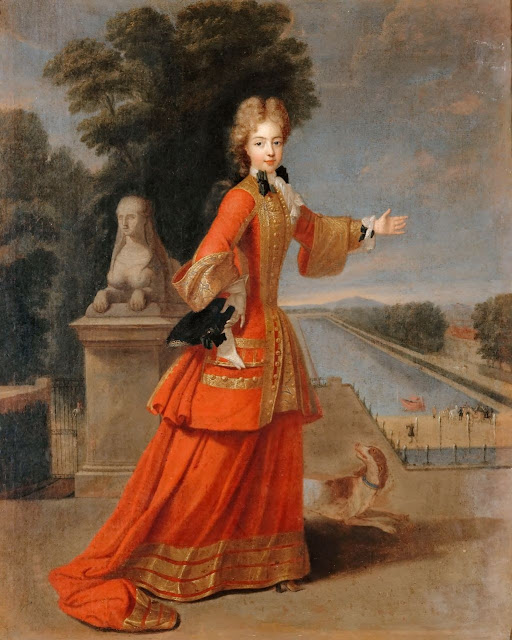
(1704) Marie Adelaide de Savoie, Dauphine de France in a riding habit largely copied on the uniform of the Carabinières (but more 'decent' / demure -and less practical: longer, more cumbersome jacket and skirt -the Carabinières' coat was the length of a pet-en-l'air http://media-cache-ak0.pinimg.com/736x/b0/b0/f7/b0b0f7e0a19f17323a14d421ac246cea.jpg).
Regardless of fashion Carabinières never wore hoops http://costumes.org/history/leloir/hoopncorset.jpg . http://costumes.org/history/kohler/413.jpg / panniers http://www.metmuseum.org/toah/images/h2/h2_1973.65.2.jpg . http://costumes.org/history/leloir/panniers.jpg or even bustles http://pirateuniversity.webs.com/abus.jpg under their petticoat / skirt but at most an 'enhancer' (bum roll) http://i46.tinypic.com/a41ylx.jpg. Also, while the corset / stays of the time crushed the breast http://ts4.mm.bing.net/th?id=H.4997818390808607&pid=1.7 . http://www.metmuseum.org/toah/images/h2/h2_C.I.39.13.211.jpg, the Carabinières' low bodice / guêpière-like 'weapons belt' http://ts4.explicit.bing.net/th?id=H.5031847403717191&pid=1.7 on the opposite 'showcased' it: no doubt contributing to their 'fine figure / glorious look' often commented upon by men and women alike.
A final point, while when in 'palace' duty they wore low shoes http://media-cache-ec0.pinimg.com/736x/b1/76/69/b17669999f0ac7d252e1ccc6f46f41d9.jpg, they wore bottines http://beatricea.unblog.fr/files/2011/02/bottines1900.jpg when riding side-saddle in 'mounted escort'.
----
1: Btw are they old songs about such army women? I know of 2 examples about a girl masquerading as a boy to follow her lover aboard a warship (Jack a Roe http://www.youtube.com/watch?v=dyAu4dbW4BE in English Chantons pour passer le temps http://www.youtube.com/watch?v=8hX8YDNUVSs&feature=player_detailpage#t=12 in French) but none about land forces; while I suppose with the promiscuity and mores aboard in the 18th C. (the 3 pillars of the Royal Navy: lash, rum and sodomy) they are far less likely to pass unnoticed than in the army: maybe it was more a sailor's dream than a soldier's? Indeed if soldiers' brides rarely follow them on campaigns http://www.youtube.com/watch?v=KWJsjSnFj_c / http://www.youtube.com/watch?v=nxezR4rMg64 but generally declined to do so http://www.youtube.com/watch?v=rxPw6QPW2ZQ / http://www.youtube.com/watch?v=hyfo-Ft4ZWo and often married was he was away http://www.youtube.com/watch?v=IysCrT8aSGU / http://www.youtube.com/watch?v=iCl17nrJOG4 / http://www.youtube.com/watch?v=O7_gOP-7cMk (though some remained faithful http://www.youtube.com/watch?v=9jUQIIHYwo0 http://www.youtube.com/watch?feature=player_detailpage&v=RoYMMfTqefM#t=348) at least for soldiers there were 'girls along all roads' http://www.youtube.com/watch?v=LhsC3YUyPL8 / http://www.youtube.com/watch?v=lYR1OHFSZp4 / http://www.youtube.com/watch?v=zGU7w7XZLrQ
2: the next opportunity being the Revolution; not during any of the few sieges by the Allies, they were done in the traditional 'decent' manner, but a siege by the Republicans of a city having rebelled against Paris and the Terror, Lyon for instance: not propitious to a perpetuation of the unit in following years! The same for the next historical opportunity, the Communes of 1871, indeed at least in Paris (semi)uniformed women fought 'like tigresses'.
3: http://www.youtube.com/watch?v=RfJZu_Bz6Yo 'The Queen had made do a bouquet / of beautiful lily flowers / and the scent of this bouquet / made marchioness die'.
4: Being intended to guard the Queen's apartments the Carabinières became part of the Garde du Dedans du Louvre (indoors Guard) while the Gendarmes from Navarre, being very 'junior' to the Gardes du Corps (raised 1422) became 'only' part of the Garde du Dehors (Outdoor Guard).
5: Under the monarchy everybody could enter Versailles (at least the gardens and the service quarters), but visitors were required to look 'not of the common', so swords were on loan at the railings gates of the Park for the burgers wishing to enter.
6: Would they manage? If they develop a fighting style of their own, favoring agility and speed (think of some martial arts as opposed to wresting), maybe? Besides, courtesy would allow women to keep using the main-gauche left hand dagger which was dropping out of fashion for men, and it may help?
7:At their creation in 1622 the Mousquetaires (like many other guard units before) had only to wear, when on-duty, an uniform cassock above 'free' civilian clothes (though for exceptional parades the king imposed an uniform color): they received a fully regulated uniform in 1673. Similarly at first the Carabinières were only required to wear a red waistsash when on-duty, though they progressively took the fashion to dress (mostly) in red and to wear red feathers on their hat, until they received a fully regulated uniform in 1673. 17th C. cut along those lines: http://2.bp.blogspot.com/-YuPglVSWi...,+'Dame+en+Habit+de+Chasse',+1670+bonnart.jpg
http://classconnection.s3.amazonaws.com/190/flashcards/305190/jpg/earlyridinghabit1316152729333.jpg
http://2.bp.blogspot.com/-RYYgFW2le...1600/ende-2017.jh-20ja...-20kopie-31738c1.jpg
http://4.bp.blogspot.com/-mk7j3gsrv...40/Douven-Anna+Maria+Luisa+de+Medici+hunt.jpg
8: Of 'junior' status the Gendarmes, Chevau-légers and Mousquetaires, also in red, belonged to the Garde du Dehors.
9: I had to browse the archives for some time to find what ASB stands for: I was initially guessing something along the lines of 'Astronomically Sized Bullshit' .
.
https://www.alternatehistory.com/discussion/showthread.php?p=6182448&mode=linear#post6182448
Background:
As stressed in the original thread, this is very, very unlikely (even if gender roles became more enforced by Victorian times). Historically we had:
- Individual women masquerading as men to enlist (in uniform, fighting, but their femininity hidden): the last example I known of in France is Fatima, a Moroccan woman who joined the Goumiers volunteer to be sent to France in 1914 as 'Régiment des Chasseurs Indigènes' -future Spahis Marocains http://femmesenuniforme.blogspot.fr/2012/09/image-fatima-seule-femme-combattante.html. A few were so admired that, once their gender known, they were not only kept in active service but promoted, such as in France Angélique Brûlon who retired in the Military Invalids as a captain and was eventually the first woman to receive the Légion d'Honneur http://en.wikipedia.org/wiki/Ang%C3%A9lique_Br%C3%BBlon, in Spain Agustina Raimunda María Saragossa Domènech (the only female officer in Wellington's army in Spain) http://en.wikipedia.org/wiki/Agostina and in Russia Nadezhda Durova 'The Cavalry Maiden' http://en.wikipedia.org/wiki/Durova who retired as captain (1).
- Individual women, acknowledged as such, in military uniform but not expected to fight: they mostly appeared in the 2nd half of the 19th C., as two very different types: as uniformed cantinières / vivandières (a French military fashion which spread together with the zouave uniform); but also high born ladies made regimental god-mothers / honorary colonels: e.g. Victoria Luise Prinzessin von Preussen for the Leib-Hussaren in 1909 http://www.preussen.de/Bilder/Geschichte/wilhelm_II./Victoria_Luise_1_-_Text_JK.jpg (I remember images of Queen Elisabeth in uniform, riding sidesaddle at the 'trooping the colours'). It was already not unknown in the (late) 18th C., we have paintings of Catherine II http://a51.idata.over-blog.com/497x...rtrait-equestre-de-Catherine-II-de-Russie.JPG riding in uniform of the Preobrazhensky Regiment http://www.oceansbridge.com/paintin...s-ZZZ-Equestrian_Portrait_of_Catherine_II.jpg (though wearing trousers and riding astride man-like is perhaps a little 'too much' for most women of the time).
- Women openly fighting (but most examples predate the generalization of uniforms), far more exceptional, in France Jeanne d'Arc but also Jeanne Hachette. This last is specially interesting, since not only she fought on the ramparts of Beauvais against the besieging Burgandians in 1472 but seemingly other women joined her to hold a segment of the curtain wall. So far we had only isolated individuals, here we have an all-female 'warband'. And to defend formal fortifications is a far less unlikely role for a 'regular' female unit than campaigning in the field. Several noblewomen became quite famous for leading the defense of their castles while their husbands were away (indeed there are still several well documented examples during the ECW and a case occurred in France as late as 1692 http://fr.wikipedia.org/wiki/Philis_de_La_Charce) and if most men had followed their lord they could have mobilized some of the women to drop boiling oil and stones on the attackers.
Lady Ann Cunningham http://en.wikipedia.org/wiki/Lady_Ann_Cummingham is also a striking example, so much the more as she reportedly raised a cavalry troop of men and women and led it in the Battle of Berwick.
- At last the rather mysterious Catherine II's 100-strong ceremonial company of Amazons raised in march 1787 by Potemkin (from wives & daughters of soldiers of the Balaklava Greek Settled Battalion) to escort the Empress during her visit with Joseph II to Crimea (because Herodotus had located the Amazons in the general area?): a whole regular unit at last; a ceremonial Queen's Guard is another not too unlikely possibility.
Thus I tried to combine these last two possibilities to have a permanent rather than ephemeral body: a troop of female defenders improvised during a siege and perpetuated as a Queen's Guard.
The difficulty is that in Western Europe during the 1700 -indeed between 1650 and the Revolutionary times- the civilian population of besieged cities was not interested in the defense, indeed not deeply in the outcome of the siege. War tried to be 'clean' and 'gentlemanly', unless the place was actually stormed troops were not 'unleashed', no murders, plunder & rapes; and for burgers in Flanders for instance to possibly pass from the rule of an Austrian Emperor to that of a French King was not too much of a concern. For the population, specially the women, to be motivated enough to fight one need a cruel civil war; the only example I can think of is the siege of Barcelona in 1714, given the atrocity of Philip V's repression in Catalonia -and it would require an independent Catalonia to perpetuate female defenders as a militia / city guard unit.
I developed my musings in France -being less ignorant of its military history, and France has a few favorable elements: the precedents of Joan of Arc and Joan Hatchet, Alienor of Aquitaine (remembered as French here) leading a troop of noble ladies masquerading as amazons during the crusade, and the great female knight Bradamante, developed in the Italian Orlandos and back-injected in the Matter of France (she was the heroin of a dramatic play first performed in 1582). Also, France had an interesting character with Julie d'Aubigny http://en.wikipedia.org/wiki/La_Maupin
For the possible uniform I concentrate on the mid-18th C., the 'heart'' of the Guerre en dentelle, my favorite period for military uniforms https://www.alternatehistory.com/discussion/showpost.php?p=8233587&postcount=6 (and wargaming). In France the most recent sieges implying a formed body of female defenders would date of the Wars of Religion (2).
So let's try: Les Carabinières de la Reine, 1585 - 1787.
Les Carabinières de la Reine: origins and history.
During the Wars of Religions French countryside was sometimes akin to the Anglo–Scottish border by the time of the Reivers, with raids and counter-raids by nobles of opposite confession. During her wanderings of 1585 Marguerite of Navarre is threatened by a party of marauders and takes refuge in the nearest castle: the landlord is away with most of his men, but the chatelaine closes the doors and arms the women. At most a few shots are fired, but learning that the lady who defended his wife is a beauty Henri decides to create a female company of Queen's Guards under her command. His relationships with Marguerite were absolutely awful, but Henri ('Until I was 40 I believed it had a bone') was not the man to miss an opportunity to gather a group of young, comely maiden at his court [as a consequence, Marguerite stays with him instead of being secluded 18 years in Usson; wonder how many of her Guards she tried to poison -she's rumored to have poisoned Gabrielle d'Estrée, who had born 4 children to the king while herself was barred http://www.youtube.com/watch?v=3tXiY2A8nAM (3)]. When Henri became king of France he added his Guard to the French Household (4).
During the Fronde the Carabinières provided the direct escort of the Queen and her sons during their escape from Paris and their wanderings, to the everlasting gratitude of Louis XIV. In 1690, despite the opposition of Madame de Maintenon Julie d'Aubigny received in commission in the Corps and became its acting swordmistress, but she was too independent for military life and resigned 3 years later, though after her return from Brussels she occasionally reappeared as an officious fencing mistress. In 1692 the Company received two recruits of note: Madeleine de Verchères http://en.wikipedia.org/wiki/Madeleine_de_Verchères was invited to join the Company, the expenses of the travel from New France to Paris covered by the Crown, and Philis de la Charce http://fr.wikipedia.org/wiki/Philis_de_La_Charce was given a commission of sous-lieutenante.
For reasons of his own Maurice de Saxe asked Louis XV to bring the Company when the king joined the army of Flanders: the Carabinières were at Fontenoy, but were forbidden to be part of the wild charge of the Household: they were the only guard Louis XV had kept for himself and the Dauphin - and they were riding sidesaddle.
Like the whole Maison Rouge the Company was reduced in 1776 and disbanded in 1787, but many ex-Carabinières, acting privately, gathered around the Queen when the revolutionary troubles began: many of them were killed defending the the Queen and the royal children when the Tuileries were stormed on aug. 10 1792. Their (ex)captain, Bien-Aimée de Labite de Monvoisin, was literally hacked to pieces while desperately trying to protect Marie-Antoinette and the princess with her body.
Louis XVIII did not resurrect the Carabinières, despite the pleas of the Duchesse d'Angoulême ; her own attempt during the 100 Days ("She's the only man in her family.") to raise an all-female royalist Compagnie de Jeanne d'Arc at Bordeaux was a failure.
Les Carabinières de la Reine: characteristic weapon and name.
It was stressed that women, being on the average shorter than men, where handicapped to reload the long-barreled muskets: but a man having to reload a mouth-loader while riding faces similar difficulties, and precisely a shoulder weapon with a shorter barrel war designed during the 16th C. for the cavalry, the carabine (rifled carbine), rifling balancing the shortening of the barrel with regard to range and accuracy. Thus the female guards received carabines, and in the same way as the Mousquetaires were named after their mousquets they were known as the Carabinières de la Reine. Of course they would carry a sword and a left-hand dagger (even when off-duty, being noble or assimilated (5) - the basic private probably ranking equal to a junior lieutenant of the Line) and often a pistol or two hidden under their skirt. In the early 18th C. the hilt of the main-gauche was modified to allow using it as a bayonet. To spread their weight sword and dagger scabbards are to a kinf of bodice / corset worn under the skirt http://24.media.tumblr.com/f8072dfb18174ac93ff5a48b420d8fe7/tumblr_mvwu24UPHn1qfbon7o1_400.jpg; 'pocket flaps' cover the slits of the skirt (or breeches).
And later Alexandre Dumas would write about the 'Trois Carabinières' (who were four) fanatically devoted to Anne d'Autriche and dueling with the Cardinal's guards (6).
Les Carabinières de la Reine: [18th C.] uniform (7).
Colors: since the high Middle-Ages the two colors associated with French royalty were blue and red, because of the 2 battle standards the Bannière (golden lilies on blue) and the Oriflamme (gold flames on red). Blue being the main color of the French 'arms' became the King's color and red the Queen's. Thus, a whole red uniform for the Carabinières. From the late 17th C. most military uniforms had a second 'facing' color (on cuffs at least, later on lapels, turnbacks, collar...), it had to be yellow, red and yellow being the colors of Navarre. Such a prestigious unit would have 'gold' buttons and lace.
Thus the Carabinières are the only company of the Maison Rouge (Red Household) belonging to the Garde du Dedans du Louvre (8).
Ranks are marked by additional gold lace, following the rules of the Gendarmerie de France http://www.maquetland.com/article-1497-gendarmerie-de-france#1690.
Badge: appearing at least on the (small) cartridge box, but probably elsewhere (buttons, buckles, dagger and sword hilts, firearms...): with reference to Athena -the 'classical' example of a respectable woman in arms- and her gorgoneion, the Head of Medusa (not unknown anyway in military decoration, of guns for instance).
Cut: by the mid-17th C. women started wearing (mostly for hunting at first) a characteristic 'riding habit' http://www.kipar.org/period-galleries/paintings/1700/bourgogne.jpg clearly copied on military uniforms (though for comfort while riding side-saddle the coat is shorter than in the manly dress): http://janeaustensworld.wordpress.com/2011/12/16/womens-riding-outfits-in-the-early-18th-century/
http://www.pinterest.com/heileen/18th-century-riding-habit/ http://jeannedepompadour.blogspot.fr/2013/07/riding-habits-1700-1770.html
http://demodecouture.com/2011/02/18th-century-riding-habitses/
http://4.bp.blogspot.com/-evXO0r7w7...éroïne+du+Dauphiné+frederic+legrip+19th+c.jpg
http://media-cache-ak0.pinimg.com/736x/a5/6c/d7/a56cd70737c00f45d6ca4118a1a6f312.jpg (late 18th C.: see also 'The Duchess' with Keira Knightley)
(a fine example in 'Brotherhood of the Wolf, unfortunately not worn by Monica Bellucci: http://www.naergilien.info/movies/PdW/Reitkleid_rot_10.jpg
http://image.toutlecine.com/photos/p/a/c/pacte-des-loups-2000-22-g.jpg).
Thus by the mid-18th C. an uniform along these lines:
http://media-cache-ec0.pinimg.com/736x/d9/37/f1/d937f139853dbaba7c1320876511ea41.jpg
Being an 'Household' unit the coat would be abundantly decorated with lace:
http://18thcenturylove.tumblr.com/post/2731978510/anna-orzelska-in-riding-habit-by-louis-de
http://demodecouture.com/wordpress/wp-contents/uploads/2011/02/1700-30_seeman.jpg
Ceremonial uniform: when in close attendance to the King the Gardes du Corps (e.g. when acting as Gardes de la Manche [guards of the sleeve]) wore a decorated hoqueton over their uniform http://resources21.kb.nl/gvn/LEMU01/LEMU01_00112083-003_U.jpg; same for the Gardes de la Prévôté de l'Hôtel du Roi http://i41.servimg.com/u/f41/09/01/04/33/garde_12.jpg. In similar circumstances - providing the immediate bodyguard of the queen during the mass for instance - the Carabinières would probably wear something similar. Because of traditional representation of Bradamante http://operabaroque.fr/Bradamante.jpg (and some of Joan of Arc http://www.histoire-en-ligne.com/IMG/jpg/doc-216.jpg) it may even more explicitly cut to look like a (17th C. theatrical) reconstruction of 'ancient armor http://jean-claude.brenac.pagesperso-orange.fr/Alcina_Gottingen_2002.jpg / http://1.bp.blogspot.com/-7eCyk1Y09...or+dancing+at+Aix,+France,+1660+engraving.jpg and with yellow rather than white as the background color. With reference to Bradamante and Athena they may even wear with the hoqueton a (light) helmet instead of their tricorne https://www.knuckleheads.net/link4/3c1.jpg (with false eyes as a remembrance of Athena's traditional helmet). All in all not dissimilar to the 'Roman' pseudo-armor worn by Louis XIV and his 'brigade' at the Carrousel of 1662 http://a406.idata.over-blog.com/500x247/3/93/95/63/HISTOIRE/LOUIS-XIV/CAROUSEL/numerisation0001.jpg, but less excessive. By tradition the hoqueton would still wear the arms of Marguerite de France http://upload.wikimedia.org/wikiped...nce.png/414px-CoA_of_Marguerite_of_France.png. In such ceremonial circumstance the Carabinières would not wear a heavy partizan like the Gardes de la Manche but a lighter shortened spontoon / half-pike.
Off-duty / mess / social uniform: OTL for hot summer times (and also when the 'riding habit' became a kind of 'easy wear' of more general use) variants with more feminine details, such as cleavage, appeared: http://media-cache-ec0.pinimg.com/736x/e4/c5/9a/e4c59aa5dd3a07e0e36cb241f2865b46.jpg . http://3.bp.blogspot.com/-U1XgF9HWE...ted+to+%C3%81d%C3%A1m+M%C3%A1nyoki+18th+c.PNG . With this uniform, thanks to a slit of the dress facing the left hip most of the sword is hidden under the skirt, only the hilt is visible so that the Carabinière can for instance dance without hindrance; the main-gauche is always worn openly.
When Marie-Antoinette played shepherdess, her guards wore this type of uniform with a straw hat decorated with tiny red roses.
Campaign dress: in the (very, very unlikely) case they would go on active campaign, since riding sidesaddle would put them in drastic inferiority, they would receive (red) trousers and high boots (light and soft, officially because like the Mousquetaires they are supposed to be able to double as mounted infantry) and would ride man fashion, shocking as it may be. Like most French heavy cavalry in campaign they would probably wear a steel breastplate under their coat -but in their case an 'anatomical' (not really 'muscle' ^.^) one, 'golden' (copper) with their badge in various metals and enamels.
Les Carabinières de la Reine: flag and musician(s).
Flag size: infantry flags were some 3 times larger than cavalry ones; while Carabinières service is mostly indoors, when escorting the queen's carriage they would obviously not walk (chivalric courtesy forbids it!) but would ride (sidesaddle), so like the Gardes du Corps and Mousquetaires (who also were on foot or mounted according to circumstances) they were given a cavalry standard. Appropriately less heavy, anyway.
Flag shape: cavalry flags were of different types fixed by formal regulations (rectangular étendards for the 'heavy' cavalry, bilobed or swallow-tailed guidons for the dragoons and hussars...) dating from the time when only 'leading' knights (chevaliers bannerets) were entitled to attach a rectangular bannière to their lance, while the ordinary knights (bas chevaliers / bacheliers / bachelors) they commanded had to be content with a forked pennon. All cavalry units of the Household had standards, but maybe, because of their exceptional nature, the Carabinières received a vexillum (OTL Frederick gave one to his Gardes du Corps http://upload.wikimedia.org/wikipedia/commons/c/c9/Garde_du_Corps-Standarte.jpg, so there is a historical precedent).
Flag decoration: within the Gendarmerie de France the Compagnie de la Reine had a very distinctive standard http://www.maquetland.com/v2/images_articles/GendReine.gif quite different from the type used by the other companies (ex: Berry: http://www.maquetland.com/v2/images_articles/fra_gendberry_drap.jpg). The standard of the Carabinières would be quite similar, with Marguerite's arms on the obverse and a (golden) gorgoneion on the reverse (and, if indeed a vexillum, given that the reverse is rarely visible, a brass gorgoneion instead of a spear head at the top of the pole).
The flag pole is covered with red velvet, with brass fleurs de lys on its upper part.
Musician(s): probably playing drum (of a lighter type than that regulated for the infantry) on foot service and trumpet (maybe shaped as a diminutive hunting horn) when riding (being of mounted infantry origin the Mousquetaires, like the line dragoons, kept their drums when mounted but it would be difficult to play a drum while riding side-saddle; and women can well play trumpet http://www.youtube.com/watch?v=OyEL3NJSHIk). As in all the Household cavalry and Gendarmerie the coat is almost entirely covered with livery lace (the Queen's instead of the King's, in their case); maybe the false sleeves are serrated http://bflons.pagesperso-orange.fr/Carroussel 2.jpg, to mark their difference.
Other female units, as a consequence of the long-standing French Carabinières:
In France:
Before the Revolution: when the French King visited a rich city the wealthy inhabitants formed a Garde D'Honneur in military uniforms to ceremonially greet him; infantry and cavalry in generally gaudy uniforms, but sometimes with small groups taking inspiration from the Household, for instance halberders in imitation of the Cent Suisses. With a female company in the Household, some Gardes d'Honneur may include a female troop; specially if the Queen is accompanying the King, but, I know, poor Maria Leszczyńska did not travel much...
After the Revolution: no way before 1871 (unless Louis XVIII had the Company in his fully reconstructed Household of 1814) because of its association with the Ancien Regime; Napoléon and Louis-Philippe's Guards were emphatically different, in composition and nomenclature from the Household of old. *Maybe*, if women had actively fought during the siege of Belfort, a paramilitary compagnie de tradition of municipal nature? OTL there *was* an attempt to form a Bataillon des Amazones de la Seine during the Prussian siege of Paris, neglected while more than 1000 volunteers had registered and hundreds of artillery and cavalry carbines gathered for them (their uniform was to be black kepi pipped orange, black hooded smock, black trousers with 2 orange stripes). And many women fought during the Commune de Paris, most as individuals in 'male' units but the -understrength- all-female Bataillon des Citoyennes Volontaires of the National Guard 12th Legion was fully organized and fought remarkably well http://www.youtube.com/watch?v=jqwRd1A7kX4.
Elsewhere, with a corps of female guards existing in France for more than 2 centuries:
- Less unlikely, Russia: Catherine II's Amazon Guard may last longer. And anyway, with the historical precedent of her Balaklava Amazon Guard, there is a possibility in the Late 19th C. Tsar's Escort: it was made of companies from the various 'exotic' ethnical-cultural groups of the Empire, some quite spectacular such as the Circassians parading in traditional armor. By then Ossetia was Russian, and Ossetian language known as related to Sarmatian and ultimately Scythian: so, in the wake of (post)romanticism / preraphaelism... what about a troop of Ossetian Amazons 'in the Scytho-Sarmatian tradition'?
- Spain (because women had fought against Napoleonic troops) for Isabella II from 1843 (or even 1830, when Ferdinand VII's heir turned to be a girl) - the Queen's female Carabineers being deeply associated with Bourbon absolutism??
Modern images of women riding in (pseudo)-18th C. costume: search for cavaleiras, the female practitioners of the tourada, the Portuguese mounted bullfighting; but nowadays they generally ride astride http://www.solesombra.net/images/stories/cavaleiros/img_2971.jpg, and the embroideries on their costumes are quite fanciful https://encrypted-tbn3.gstatic.com/...yT29pCZbpOsYmbtALKO2GFiHjunvbTQOj2v8NORq-7Eyg. Very spectacular and inspirational, nonetheless.
Cavaleiras bullfighters were already a tradition of long standing in the late 19th C. (though they rode sidesaddle by then): interesting in the context of this post to have a 'Latin' culture allowing women to practice such a 'manly' activity.
Comments and criticisms, please (9).

(1704) Marie Adelaide de Savoie, Dauphine de France in a riding habit largely copied on the uniform of the Carabinières (but more 'decent' / demure -and less practical: longer, more cumbersome jacket and skirt -the Carabinières' coat was the length of a pet-en-l'air http://media-cache-ak0.pinimg.com/736x/b0/b0/f7/b0b0f7e0a19f17323a14d421ac246cea.jpg).
Regardless of fashion Carabinières never wore hoops http://costumes.org/history/leloir/hoopncorset.jpg . http://costumes.org/history/kohler/413.jpg / panniers http://www.metmuseum.org/toah/images/h2/h2_1973.65.2.jpg . http://costumes.org/history/leloir/panniers.jpg or even bustles http://pirateuniversity.webs.com/abus.jpg under their petticoat / skirt but at most an 'enhancer' (bum roll) http://i46.tinypic.com/a41ylx.jpg. Also, while the corset / stays of the time crushed the breast http://ts4.mm.bing.net/th?id=H.4997818390808607&pid=1.7 . http://www.metmuseum.org/toah/images/h2/h2_C.I.39.13.211.jpg, the Carabinières' low bodice / guêpière-like 'weapons belt' http://ts4.explicit.bing.net/th?id=H.5031847403717191&pid=1.7 on the opposite 'showcased' it: no doubt contributing to their 'fine figure / glorious look' often commented upon by men and women alike.
A final point, while when in 'palace' duty they wore low shoes http://media-cache-ec0.pinimg.com/736x/b1/76/69/b17669999f0ac7d252e1ccc6f46f41d9.jpg, they wore bottines http://beatricea.unblog.fr/files/2011/02/bottines1900.jpg when riding side-saddle in 'mounted escort'.
----
1: Btw are they old songs about such army women? I know of 2 examples about a girl masquerading as a boy to follow her lover aboard a warship (Jack a Roe http://www.youtube.com/watch?v=dyAu4dbW4BE in English Chantons pour passer le temps http://www.youtube.com/watch?v=8hX8YDNUVSs&feature=player_detailpage#t=12 in French) but none about land forces; while I suppose with the promiscuity and mores aboard in the 18th C. (the 3 pillars of the Royal Navy: lash, rum and sodomy) they are far less likely to pass unnoticed than in the army: maybe it was more a sailor's dream than a soldier's? Indeed if soldiers' brides rarely follow them on campaigns http://www.youtube.com/watch?v=KWJsjSnFj_c / http://www.youtube.com/watch?v=nxezR4rMg64 but generally declined to do so http://www.youtube.com/watch?v=rxPw6QPW2ZQ / http://www.youtube.com/watch?v=hyfo-Ft4ZWo and often married was he was away http://www.youtube.com/watch?v=IysCrT8aSGU / http://www.youtube.com/watch?v=iCl17nrJOG4 / http://www.youtube.com/watch?v=O7_gOP-7cMk (though some remained faithful http://www.youtube.com/watch?v=9jUQIIHYwo0 http://www.youtube.com/watch?feature=player_detailpage&v=RoYMMfTqefM#t=348) at least for soldiers there were 'girls along all roads' http://www.youtube.com/watch?v=LhsC3YUyPL8 / http://www.youtube.com/watch?v=lYR1OHFSZp4 / http://www.youtube.com/watch?v=zGU7w7XZLrQ
2: the next opportunity being the Revolution; not during any of the few sieges by the Allies, they were done in the traditional 'decent' manner, but a siege by the Republicans of a city having rebelled against Paris and the Terror, Lyon for instance: not propitious to a perpetuation of the unit in following years! The same for the next historical opportunity, the Communes of 1871, indeed at least in Paris (semi)uniformed women fought 'like tigresses'.
3: http://www.youtube.com/watch?v=RfJZu_Bz6Yo 'The Queen had made do a bouquet / of beautiful lily flowers / and the scent of this bouquet / made marchioness die'.
4: Being intended to guard the Queen's apartments the Carabinières became part of the Garde du Dedans du Louvre (indoors Guard) while the Gendarmes from Navarre, being very 'junior' to the Gardes du Corps (raised 1422) became 'only' part of the Garde du Dehors (Outdoor Guard).
5: Under the monarchy everybody could enter Versailles (at least the gardens and the service quarters), but visitors were required to look 'not of the common', so swords were on loan at the railings gates of the Park for the burgers wishing to enter.
6: Would they manage? If they develop a fighting style of their own, favoring agility and speed (think of some martial arts as opposed to wresting), maybe? Besides, courtesy would allow women to keep using the main-gauche left hand dagger which was dropping out of fashion for men, and it may help?
7:At their creation in 1622 the Mousquetaires (like many other guard units before) had only to wear, when on-duty, an uniform cassock above 'free' civilian clothes (though for exceptional parades the king imposed an uniform color): they received a fully regulated uniform in 1673. Similarly at first the Carabinières were only required to wear a red waistsash when on-duty, though they progressively took the fashion to dress (mostly) in red and to wear red feathers on their hat, until they received a fully regulated uniform in 1673. 17th C. cut along those lines: http://2.bp.blogspot.com/-YuPglVSWi...,+'Dame+en+Habit+de+Chasse',+1670+bonnart.jpg
http://classconnection.s3.amazonaws.com/190/flashcards/305190/jpg/earlyridinghabit1316152729333.jpg
http://2.bp.blogspot.com/-RYYgFW2le...1600/ende-2017.jh-20ja...-20kopie-31738c1.jpg
http://4.bp.blogspot.com/-mk7j3gsrv...40/Douven-Anna+Maria+Luisa+de+Medici+hunt.jpg
8: Of 'junior' status the Gendarmes, Chevau-légers and Mousquetaires, also in red, belonged to the Garde du Dehors.
9: I had to browse the archives for some time to find what ASB stands for: I was initially guessing something along the lines of 'Astronomically Sized Bullshit'
Last edited:

